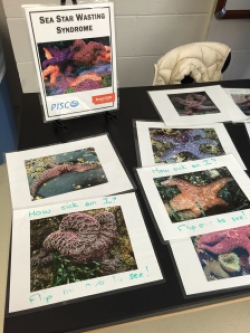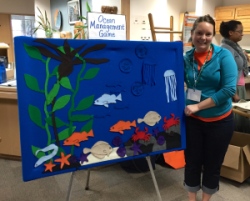The PhD as a journey.
Few things can be soothing when difficulties come up. Each person has his own remedies against hardships, stress or feelings of unworthiness. One thing is certain: difficulties ALWAYS come up to EVERYONE. Yet how people manage them can result in either improvement and success or desperation and depression.
When I go through hard times, my way out is frequently the poem below (and illegal amounts of cheese).
I know of a few people that agree on how tough it is to be a PhD student. I did not realize what I was getting myself into; how perplexed my life was about to become. I enjoy learning more than anything else, and I am passionate about the conservation of the seas and their inhabitants. So, getting into this PhD seemed ideal for me. And it is. There are times though, that I am so ramfeezled, working long days until the small hours that I don’t have enough time to stop and look at the people around me, have long inspiring conversations, enjoy life.
I know of a few people that would agree how hard it is to live abroad. Having your family 10.000 km away. Struggling to keep your friendships through skype for 3 years. Striving to maintain feelings through online quick conversations done at 10 hours of difference. At the same time, trying to understand a different language and a diverse way of thinking. Understanding the words is easy. Figuring out what lays behind them is far complicating especially when the cultural gaps are enormous and the people are particularly stoical. On top of that, learning programming languages, whale languages, acoustic properties, oceanographic programs, statistical modeling, and a long list of academic skills.

It has not been easy but it has been a magical journey. I have made new friends and learned from their mindset. I made new “families” with the spectacular people I have lived with. I got numerous scientific skills and learned about the world away from the motherland. I have seen the world’s largest trees, luscious forests, grandiose mountains, blue whales and exciting wildlife, exuberant waterfalls and rivers, the Pacific Ocean. When I faced new challenges, I also discovered a part of the world inside me that I did not know of, and out of comparison, I appreciated things that before I would take for granted. My PhD challenge has been a learning experience in so many ways, through both pleasant and negative phases.

When my soul is troubled and I feel small facing everything that I do not know then sometimes I want to give up. Then I read Ithaka (and have a grilled cheese sandwich) and usually recover. This poem reminds me to go for what I am passionate about without focusing on the difficulties.
Constantine Cavafy wrote Ithaka in 1911 inspired by Odysseys and his journey to his home at the island of Ithaka. This poem is about appreciating the journey of life, and growing through the experiences gained. Life (just like the PhD) is a journey , and everyone has to face and accept its difficulties that are simply part of it. Sometimes the more the difficulties the more the opportunities to build up defenses that make one stronger. The journey that takes us to the destination is more important than the goal itself.
To attribute an acoustic sense to this post you can skip the text and watch the video where Sir Sean Connery narrates this poem.
Ithaka
As you set out for Ithaka
hope the voyage is a long one,
full of adventure, full of discovery.
Laistrygonians and Cyclops,
angry Poseidon—don’t be afraid of them:
you’ll never find things like that on your way
as long as you keep your thoughts raised high,
as long as a rare excitement
stirs your spirit and your body.
Laistrygonians and Cyclops,
wild Poseidon—you won’t encounter them
unless you bring them along inside your soul,
unless your soul sets them up in front of you.
Hope the voyage is a long one.
May there be many a summer morning when,
with what pleasure, what joy,
you come into harbors seen for the first time;
may you stop at Phoenician trading stations
to buy fine things,
mother of pearl and coral, amber and ebony,
sensual perfume of every kind—
as many sensual perfumes as you can;
and may you visit many Egyptian cities
to gather stores of knowledge from their scholars.
Keep Ithaka always in your mind.
Arriving there is what you are destined for.
But do not hurry the journey at all.
Better if it lasts for years,
so you are old by the time you reach the island,
wealthy with all you have gained on the way,
not expecting Ithaka to make you rich.
Ithaka gave you the marvelous journey.
Without her you would not have set out.
She has nothing left to give you now.
And if you find her poor, Ithaka won’t have fooled you.
Wise as you will have become, so full of experience,
you will have understood by then what these Ithakas mean.
-Translated by Edmund Keeley/Philip Sherrard-
The PhD has been the motivation for my journey, the reason that brought me on this route, because of which I am constantly learning. The road has not been flat, straight, or sunny, but I hear that a smooth sea never made a skilled sailor.

Enjoy your ride.
***This post is dedicated to my OSU adviser Holger who has literally reached his Ithaca, since he moved there already. I bet his journey was long. Metaphorically too. Now he is helping us, his students, to reach our own. Also to my ORCAA lab-mates Selene, Michelle, Danielle and Samara for being inspiring and motivating; excellent traveling comrades. Also to Jeffrey and Sharon for always being there for me when any short of hardship appears. And to the precious people I have met on the way and the ones that have always been there. You know who you are***
















































